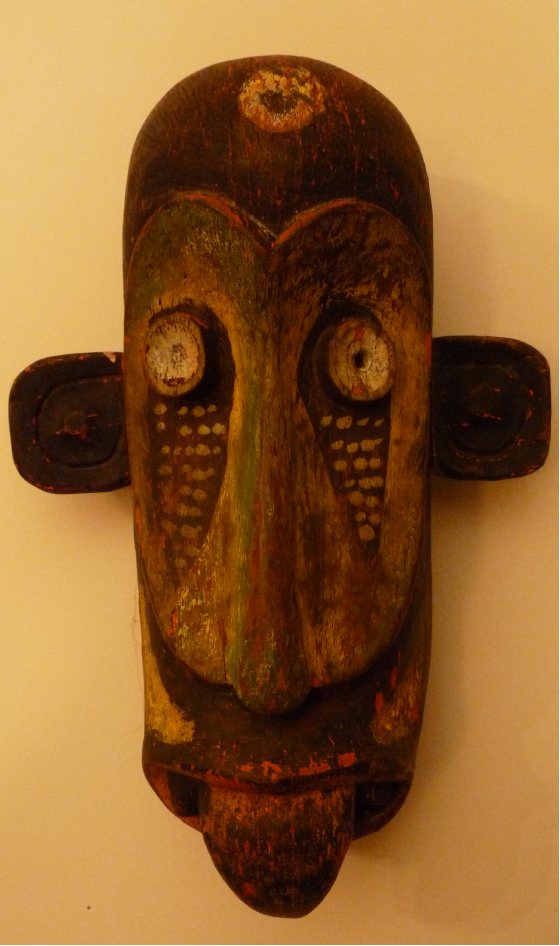Mask in the style of a Kwoma Savi Mask
Because of its small size, hollowed shape and uncharacteristic ears, this is more likely an art object made in the style of a Kwoma savi mask than one intended for actual use. The beauty and spirit of these masks has made them desirable collectable objects throughout the world since the nineteenth century, and skilled carvers can substantially supplement their incomes by producing examples that closely resemble utilitarian masks, but that may be more convenient to carry and display or more artistically expressive.
In this case, the coloration, shape of the head, bulging eyes and tearshaped eye areas, protruding tongue and circle pattern on the top of the head strongly suggest that this piece was created in the style of a savi mask of the Kwoma or Iatmul people of the middle Sepik river area. The savi mask is one of the tools used as protection against black magic in the middle Sepik world. Easily identified by their protruding tongues and large eyes, these masks represent aggressive spirits that ward off enemies of the clan. Savis are supernatural beings and are some of the most powerful spirits recognized in this culture. Villagers may share in this power simply by collecting the masks, which are not meant to be worn.
The middle Sepik Region is populated mainly by people who inhabit small, traditional villages along the banks of the river and its tributaries. Ceremonial life centers around the Haus Tambaran, or Spirit House, the most important building in the village. A vast array of carvings, including masks, statues and figures are kept inside the Haus Tambaran. The entire village collection of savi masks would be stored there, along with most other items of ritual significance, and only senior males would be allowed to enter the Haus to be in their presence.
Image: Ironwood, pigment, metal hardware; 26 x 17.5 x 11cm.
Nelson South East Asia Collection © 2025
